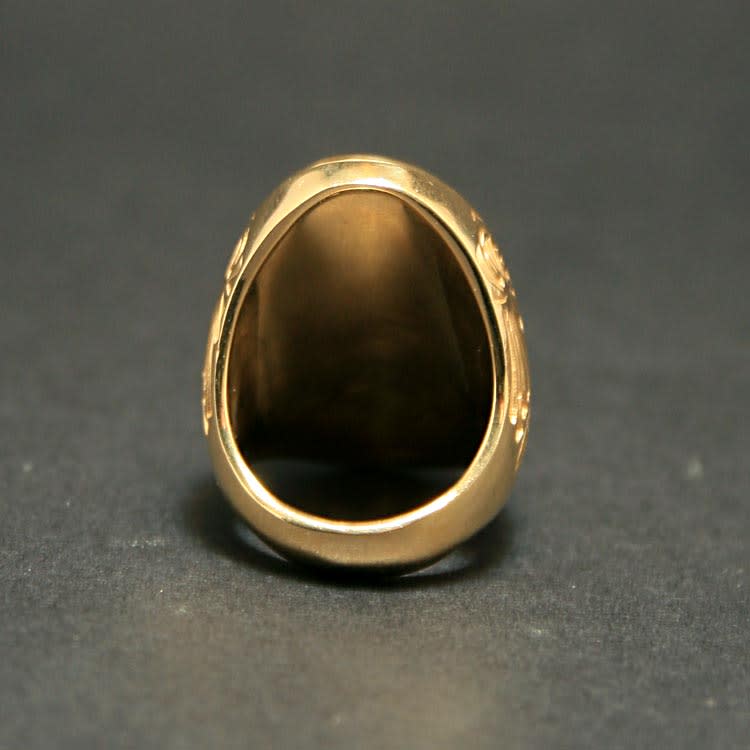Gold Ring Featuring a Classical Revival Carnelian Intaglio of a Man, Possibly Dionysus, 18th Century CE
Carnelian and Gold
FJ.6796
Further images
This Gorgeous Intaglio Has Been Mounted in a Modern 18 Karat Gold Rin The art of glyptics, or carving on colored precious stones, is probably one of the oldest known...
This Gorgeous Intaglio Has Been Mounted in a Modern 18 Karat Gold Rin
The art of glyptics, or carving on colored precious stones, is probably one of the oldest known to humanity. Intaglios, gems with an incised design, were made as early as the fourth and third millennia B.C. in Mesopotamia and the Aegean Islands. They exhibit a virtuosity of execution that suggests an old and stable tradition rooted in the earliest centuries. The tools required for carving gems were simple: a wheel with a belt-drive and a set of drills. Abrasives were necessary since the minerals used were too hard for a metal edge. A special difficulty of engraving intaglios, aside from their miniature size, was that the master had to work with a mirror-image in mind.
The Classical Revival was a phenomenon that swept through Europe in the 18th and 19th Centuries. A new appreciation for antiquity and ancient art forms was fostered by discoveries in the nascent scientific field of archaeology. Perhaps the Classical Revival also reveals a latent longing towards the Arcadian lifestyles of yesterday abandoned as Europe became rapidly industrialized and increasingly urbanized. The engraved image of a standing bearded man decorates the surface of this ring. This man might be a representation of Dionysus, the Greek god of wine and revelry. This attribution is suggested by the small drinking vessel the man holds in his right hand. In his other arm, the man holds a staff. If not the god himself, this figure might represent one of the many followers of Dionysus. This beautiful seal, mounted in a gorgeous modern gold ring, celebrates antiquity as reinterpreted by the Victorian era.
The art of glyptics, or carving on colored precious stones, is probably one of the oldest known to humanity. Intaglios, gems with an incised design, were made as early as the fourth and third millennia B.C. in Mesopotamia and the Aegean Islands. They exhibit a virtuosity of execution that suggests an old and stable tradition rooted in the earliest centuries. The tools required for carving gems were simple: a wheel with a belt-drive and a set of drills. Abrasives were necessary since the minerals used were too hard for a metal edge. A special difficulty of engraving intaglios, aside from their miniature size, was that the master had to work with a mirror-image in mind.
The Classical Revival was a phenomenon that swept through Europe in the 18th and 19th Centuries. A new appreciation for antiquity and ancient art forms was fostered by discoveries in the nascent scientific field of archaeology. Perhaps the Classical Revival also reveals a latent longing towards the Arcadian lifestyles of yesterday abandoned as Europe became rapidly industrialized and increasingly urbanized. The engraved image of a standing bearded man decorates the surface of this ring. This man might be a representation of Dionysus, the Greek god of wine and revelry. This attribution is suggested by the small drinking vessel the man holds in his right hand. In his other arm, the man holds a staff. If not the god himself, this figure might represent one of the many followers of Dionysus. This beautiful seal, mounted in a gorgeous modern gold ring, celebrates antiquity as reinterpreted by the Victorian era.





